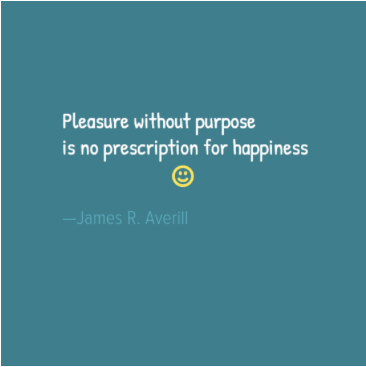 It seems we are always on an unsatisfactory quest to find happiness. For all the control we have over our lives, it is disconcerting how difficult it is to find happiness. Richard Carlson’s You Can Be Happy No Matter What tells us we have been looking in the wrong place. According to Carlson, a psychotherapist, the reason why it appears this state of contentment and equanimity is so hard to find is because happiness cannot be found. Instead, he proposes happiness is always in us. To find and cultivate it, we must keep in mind five simple principles: Thinking, moods, feelings, separate realities, and being in the present.
It seems we are always on an unsatisfactory quest to find happiness. For all the control we have over our lives, it is disconcerting how difficult it is to find happiness. Richard Carlson’s You Can Be Happy No Matter What tells us we have been looking in the wrong place. According to Carlson, a psychotherapist, the reason why it appears this state of contentment and equanimity is so hard to find is because happiness cannot be found. Instead, he proposes happiness is always in us. To find and cultivate it, we must keep in mind five simple principles: Thinking, moods, feelings, separate realities, and being in the present.
It is incredible just how powerful thinking is. In fact, it is a little too incredible. Richard Carlson describes how we must think in order to achieve happiness. He describes the importance of reminding ourselves that we are the thinkers. How we think is merely our perception of the world. What we choose to think, be it positive or negative thoughts, is up to us. After all, we are the ones producing these thoughts. Because we are in control, we can stop thinking these thoughts with the same effort of creating them. Dwelling on these thoughts always leads to unhappiness–not what we are aiming for. Richard uses an analogy to represent this: Our thinking is gasoline, and our thoughts are mini fires. The more we think about something that causes distress, the more it grows out of our control.
Not only can our thoughts be either negative or positive, but they can also be warped depending on our moods. Low moods drastically affect our decision-making, so Carlson offers us the solution of waiting for these low moods to subside. When we are in a low mood, our judgement is unstable and unreliable. We tend to generate more serious and malicious thoughts in this mood, so it is best to keep our thoughts to ourselves. Carlson also warns us not to try and solve problems in a low mood; we will find more clarity in high moods. Conversely, when we are in our high moods, we are more amiable and sensible. It is in this mood that Richard urges us to solve our problems.
However, it can sometimes be difficult to tell when we are in a bad mood or when we are taking a turn the worst. Our feelings tell us when we do this. It is human nature to get caught up in the moment, which leads to overreaction and obstinance. It is important to listen to ourselves and be able to understand when we are upset or troubled. Feelings like envy, anger, and impatience are signs that you are in a bad mood and should try to keep things to yourself. Again, our feelings cloud us with questionable judgement. In times like these, it is best to stay quiet and wait for our moods to rise. Good feelings, on the other hand, are a sign you are doing the right thing. Keep doing whatever it is you are doing, for it is clearly working. Richard Carlson likes to think of feelings like alarms that tell us what is happening. Whenever there is a core meltdown, know that you should be skeptical of your thoughts, for they are caused by bad feelings.
The fourth principle, separate realities, explains how we should interact with others. I mentioned in the thinking principle that how we think is merely our perception of the world, so our thoughts should be treated thusly. Everything we see and how we react to our thoughts is filtered by our perceptions, and it applies to everyone else, too. How I feel about one thing can be interpreted another way by you. Consequently, we must be open-minded and willing to adapt to other’s thought systems. Thought systems are an important concept in psychology. Carlson expounds thought systems as a collection of an individual’s habitual or set thoughts, beliefs, and perspectives. Taking this into account, we often find ourselves combatting with another’s conflicting thought system. Since we do not share every belief, Richard recommends we build our tolerance to others’ thought systems. We may never adopt another’s thought system, so our only option is to understand it. Instead of criticizing someone else’s thought system, try to understand it and appreciate it. Whether it be your friend, spouse, or affiliate, understanding separate realities will come in handy.
Lastly, we can all find time for being in the present. For readers who have read my post on mindfulness, this should be familiar. Unfortunately for most of us, a majority of our time is squandered thinking about things we cannot change. Most of our thinking is torn betwixt the past and the future, two tense (pun intended) and ever-changing events that are not worth our time. We should instead be in the moment, which can be experienced, unlike the others. Once again we see the power of thinking. Focusing our energy on things we know are out of our reach is futile. Furthermore, Richard comments on the impracticality of therapy, AA, and dieting programs (not to denounce them, of course). Therapists will tell their patients to examine their pasts, AA members are told to always be thinking of not drinking, and participants of diets are told to constantly be thinking about healthy food. Richard points out how these curative organizations are reinforcing negative thoughts. Remember the gasoline/fire analogy? By thinking about a negative past to understand how you are today, or always reminding yourself not to drink, or selecting foods that will fit into your diet, you are only making the problem worse. Habits form when we think too much about something. We must let go. We must stop thinking about the source of the problem!
In conclusion, I would like to restate the final sentence of You Can Be Happy No Matter What because I felt it was not only true, but it was powerful: You can be happy right here, right now, if you choose to do so.
For further reading: You Can Be Happy No Matter What by Richard Carlson (1997)
 Happiness, according to psychologist James R. Averill, a Eudaemonist, is a means-to-an-end, contrary to what his predecessor Aristotle thought. After taking into account both survey reports and behavioral observations, he devised a table of happiness (see below). It is a 2×2 table, one axis being “Activation,” the other “Objectivity.” The four types of happiness he identified were joy, equanimity, eudaemonia, and contentment. He narrowed it down to the objective standard of high immersion known as “eudaemonia,” a term for overall well-being that finds its roots in Aristotle’s Nicomachean Ethics. Aristotle wrote that eudaemonia was achieved through activity, as when we are so engaged in doing something, we forget we are doing it, and lose a sense of time—time flies when you’re having fun. As such, happiness for Aristotle is not a typical emotion in that it occurs for periods of time. You cannot always be in a state of eudaemonia. Rather, it can be actively pursued when you immerse yourself in meaningful work. To be happy is not to be happy about or for anything because it is essentially an object-less emotion, a pure feeling. Eudaemonia is distinguished from equanimity by the fact that the latter is the absence of conflict, the former the resolution thereof. Equanimity has been valued by philosophers as a state of total inner peace; on the other hand, eudaemonia is the result of achieving a
Happiness, according to psychologist James R. Averill, a Eudaemonist, is a means-to-an-end, contrary to what his predecessor Aristotle thought. After taking into account both survey reports and behavioral observations, he devised a table of happiness (see below). It is a 2×2 table, one axis being “Activation,” the other “Objectivity.” The four types of happiness he identified were joy, equanimity, eudaemonia, and contentment. He narrowed it down to the objective standard of high immersion known as “eudaemonia,” a term for overall well-being that finds its roots in Aristotle’s Nicomachean Ethics. Aristotle wrote that eudaemonia was achieved through activity, as when we are so engaged in doing something, we forget we are doing it, and lose a sense of time—time flies when you’re having fun. As such, happiness for Aristotle is not a typical emotion in that it occurs for periods of time. You cannot always be in a state of eudaemonia. Rather, it can be actively pursued when you immerse yourself in meaningful work. To be happy is not to be happy about or for anything because it is essentially an object-less emotion, a pure feeling. Eudaemonia is distinguished from equanimity by the fact that the latter is the absence of conflict, the former the resolution thereof. Equanimity has been valued by philosophers as a state of total inner peace; on the other hand, eudaemonia is the result of achieving a  goal, which necessarily entails conflict, viz. desire vs. intention. When you are confident in your abilities and set realistic goals, when you are able to complete their goals, having overcome conflict, you can achieve happiness. Too many short-term goals means not experiencing enough of what life has to offer, while too many long-term goals means not being accomplished or confident in yourself. The measure of happiness, then, is relative, not absolute, and differs from person to person. What remains absolute, however, is that this sense of achievement can be had privately, by yourself, and publicly, when it is done for your community, family, or close friends. Inherent to eudaemonia, Averill asserts, is purpose: Behind happiness is direction, intention, and devotion. This led him to claim that “Pleasure without purpose is no prescription for happiness,” meaning you should not resort to hedonism to be happy, but must seek pleasure in meaningful actives into which you can immerse yourself.
goal, which necessarily entails conflict, viz. desire vs. intention. When you are confident in your abilities and set realistic goals, when you are able to complete their goals, having overcome conflict, you can achieve happiness. Too many short-term goals means not experiencing enough of what life has to offer, while too many long-term goals means not being accomplished or confident in yourself. The measure of happiness, then, is relative, not absolute, and differs from person to person. What remains absolute, however, is that this sense of achievement can be had privately, by yourself, and publicly, when it is done for your community, family, or close friends. Inherent to eudaemonia, Averill asserts, is purpose: Behind happiness is direction, intention, and devotion. This led him to claim that “Pleasure without purpose is no prescription for happiness,” meaning you should not resort to hedonism to be happy, but must seek pleasure in meaningful actives into which you can immerse yourself. It seems we are always on an unsatisfactory quest to find happiness. For all the control we have over our lives, it is disconcerting how difficult it is to find happiness. Richard Carlson’s
It seems we are always on an unsatisfactory quest to find happiness. For all the control we have over our lives, it is disconcerting how difficult it is to find happiness. Richard Carlson’s